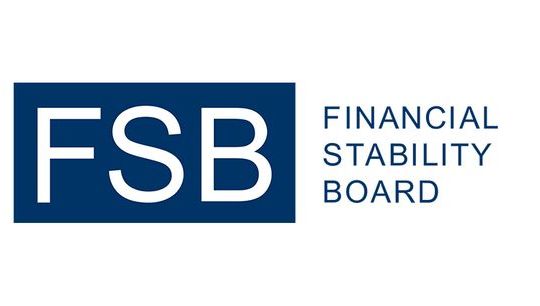Alternative Investments: Asset-based versus Asset-backed
By Barry Fein, Jason Schumacher, Academia Business Capital
Published: 25 July 2025
Academia Business Capital (“ABC”) is currently raising its first fund, meeting with potential investors across family offices, institutions, and banks. Many express interest in private credit and Asset-based lending—our area of expertise. However, we often find confusion between “Asset-based” and “Asset-backed” lending. As investors mention pooled credit card receivables, leases, mortgages, and other assets, we “cringe.” To clarify: Asset-backed lending commonly refers to securitizations (pools of assets), while Asset-based lending involves loans secured by specific assets. Academia Business Capital holds that curiosity is a virtue and is committed to educating investors on this important distinction.
We tried to head off confusion in our investor presentation by citing the OCC’s definition of Asset-based lending from the Comptroller’s handbook "A form of lending in which credit is extended and secured by specific assets, and the amount of credit available to the borrower is determined by the value of those assets." We like to think of Asset-based as “on Balance Sheet”. The OCC Examiner’s Guide to Investment Products and Practices describes Asset-backed securities as “certificates backed by credit card receivables, accounts receivable, automobile paper, boat loans, recreational vehicle credits, and manufactured housing loans". While syndicated and pooled describe the differentiation well, this is “off Balance Sheet”. A key distinction between the two products is who owns the collateral and how the obligations are repaid.
When we draw a Venn diagram of collateral, there is an overlap of assets, which may be the cause of confusion. Experienced Asset-based lenders often utilize securitizations for accounts receivable and similar assets, carefully selecting the optimal structure for each credit situation. Typically, with Asset-based loans, the underlying asset remains on the borrower’s balance sheet—hence, the importance of distinguishing these as on-balance sheet transactions. Borrowers that have an irregular cash flow due to distress, rapid growth, and seasonality benefit from the Lender focusing on the sale of Balance Sheet assets for a range of operating conditions. The Asset-backed investor has a direct claim on the cash flows generated by the pool of assets. The underwriting focus of the Asset-backed securities is the asset performance and conversion of the assets to cash in a normal range of conditions.
The Asset-backed security can be structured through pooling and servicing agreements governing operations of Special Purpose Vehicles (the “SPV”) holding the assets. The SPV is typically bankruptcy remote from the entity generating the assets. While Asset-based loans are governed by a Loan and Security Agreement and have a comparatively intensive operating entity in the form of a functioning business.
Securitization offers benefits to the investor including liquidity, diversification, and customizable risk return profiles. The Asset-based loan is a more traditional credit product, albeit with comparatively low loss ratios. The Secured Finance network (“SF Net”) shows average gross write-offs as a percentage of outstandings from 1993 to 2020 below 1.00%. Whereas securitized products are customized and rated by third party ratings agencies to match an investor's risk appetite and mandate.
Asset-backed securities are sought by originators seeking the off-balance sheet financing or liquidity tied up in the collection of the assets. A pool of consumer finance receivables, mortgages or royalties are examples of the types of assets that are easily collateralized in this way. Asset-based loans allow cash flow-constrained companies to leverage accounts receivable, inventory, machinery and equipment to address growth, cyclical, seasonal, or distress-related cash needs.
An Alternative asset investor who craves liquidity would typically seek out Asset-backed securities. Additionally, the pools of securities can be customized for each institutional risk profile from investment grade to junk. The SEC’s Division of Economic and Risk Analysis (DERA) estimated $6 trillion in US based originations of Asset-backed securities from 2014 to 2024. The tradable nature of the Asset-backed securities allows for a shorter period of time. The 2023 SF Net annual market sizing survey estimates origination of undrawn commitments of Asset-based loans in the United States for 2022 at $502 Billion. Asset-based loan returns vary from Bank led to Private Credit between high single digits to high teens. While the most standardized terms exist for Syndicated Asset-based loans, most of the structures are bespoke agreements between Borrower and Lender. The duration of an Asset-based loan is typically three to five years. Borrowers seeking an Asset-based loan for established growth migrate to lower cost Bank led Asset-based loans, leaving leveraged, seasonal, cyclical and distress related Borrowers seeking financing provided by private credit.
Managers should consider risk appetite, liquidity needs and operational capabilities when selecting either an Asset-based or Asset-backed investment. The Asset-backed security investor needs to understand the asset pool performance and cash flow predictability to construct a portfolio that meets your institution’s needs. Conversely, Asset-based lenders need the operational capabilities to monitor an Asset-based loan and structure a superior risk adjusted return with Borrowers. Partnering with an experienced lender who understands both the value and how to realize the value of the Borrower’s assets is paramount to a successful Asset-based lending portfolio.
For investors or managers interested in learning more about Asset-based lending, please reach out to Academia Business Capital ([email protected]).







